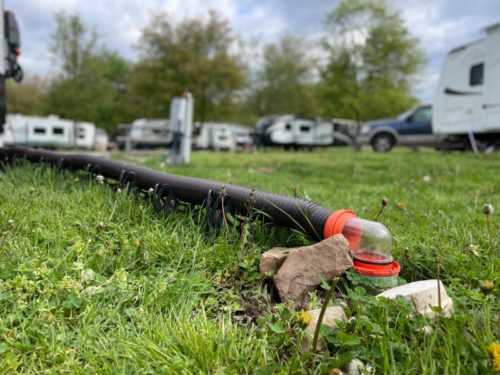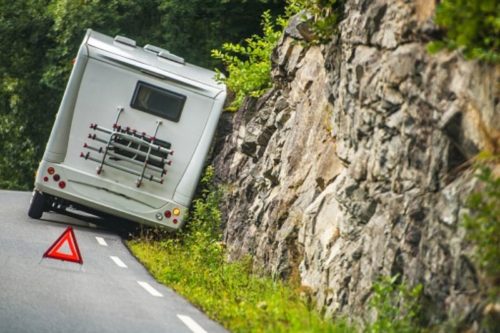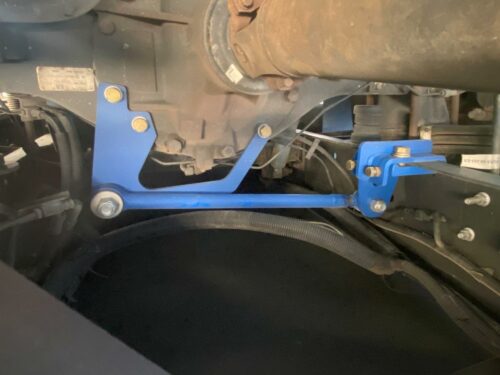It was about a week into traveling through Texas during a late Spring heat wave that I really started to learn some valuable lessons about food storage. Nothing, after all, forces you to think outside the box quite like consecutive 105+ degree temperatures, full sun, and a very basic food storage setup that’s equipped for anything but extremes.
What I’m alluding to, of course, is living out of a van without a refrigerator.
LIFE WITH A COOLER
I’ve always been keen on simplicity. When I first left my home state of New Jersey for that open road, I had no toilet, no shower, no heating or AC system, no sleek pull-out storage drawers, and certainly no fridge; and I made it work. Three years later, home is still situated on wheels and I’m still making do- and dare I say, thriving?!– with a simple cooler-and-ice setup. Am I merely eating ramen noodles, granola bars, and pre-packaged meals all the time? Am I eating out all the time? Or am I just….not eating?! No way, wayfinding souls. I’m a vegetarian with a healthy appetite that worships fresh produce, tries to stray away from overly processed foods, and loves to cook, and I’m a firm believer that all it takes is a bit of planning and some minor adjustments in how we approach our food and cooking habits to eat just as well on the road as in a stationary home kitchen. And all without a refrigeration setup.
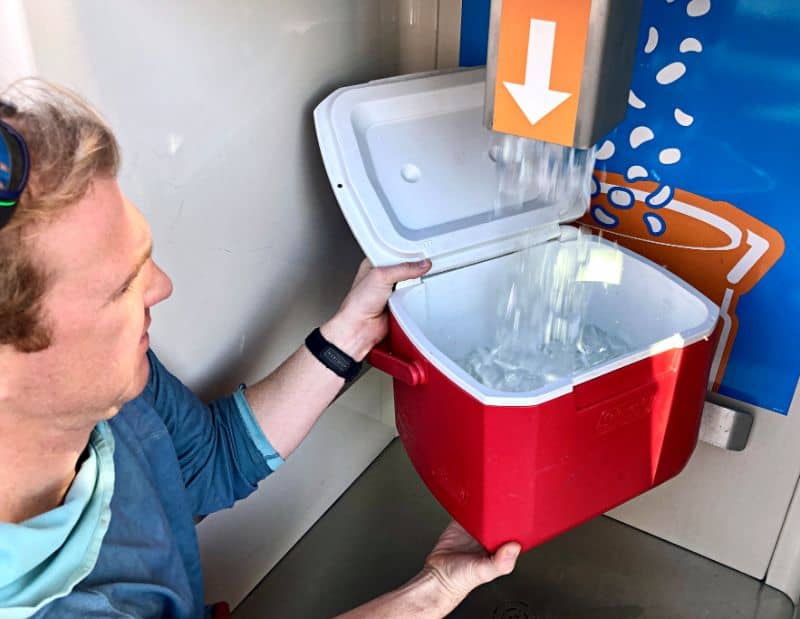
So is living without a fridge really doable long-term? Does your brand of cooler matter? Will bags of ice ruin the planet and bring disgrace to your family? I’ve asked these questions and more, and I’ve spent a good couple of years living the no-fridge experience, and here’s what I’ve learned about how to live in a van without a refrigerator.
FRIDGE VS COOLER
If you’ve decided to forgo an electric fridge in your van and stick with the ice-in-a-box system to keep your perishables within safe eating parameters, welcome to the cool side (yes, I went there.) And fear not: life without a refrigerator really isn’t that complicated, and ice works pretty darn well in keeping things cold. Because let’s be real here. Unless you have thousands of extra bucks lying around to invest in a premium 12V fridge and a proper solar-energy setup (or have a sponsor to front the costs for you), or, unless you plan on staying at campgrounds with hook-ups most of the time (which I hope you don’t!) a traditional cooler is a far cheaper option in terms of keeping your food cold. And remember: those extra dollars are needed for gas.
DOES COOLER BRAND MATTER?
So if you’re going to be living in your van without a fridge, should you buy a top-shelf cooler brand? I’ve mulled this question over tirelessly, and done hours upon hours of research. Personally, I’ve always made do with whatever I had lying around, mostly Colemans, Igloos, and “simpler” models; but if you have the space and the budget, investing in a premium cooler that’s known for its insulation and ice retention – think brands like YETI, RTIC, Cordova, and the ilk– is probably worthwhile, even though you’ll often get less interior space. I can vouch that it’s definitely not necessary, though, and you can exist blissfully (or blissfully enough) with any hard-top cooler if you’re smart about how you use it.

COOLER BASICS: LESSONS LEARNED AND PRO TIPS
- Keep your cooler in a strategic, shade-optimized spot.
- Keep your cooler as filled as possible. The less air you have circulating in open space, the longer your ice will last.
- Don’t drain that cold water! It helps insulate the ice.
- Minimize how often you open and close the cooler lid (especially in warmer locales!)
- Make sure your food is in airtight containers or sealed really well. Like, really really well. Because ice water getting into your marinara sauce or hummus sucks.
- Plastic ziplocks aren’t great at keeping water out. Mason jars are.
- Frozen foods can, in fact, be kept in a cooler. And they add extra cooling. Just try and keep them away from the bottom where they’ll get water logged, and try and cook your frozen items within a day.
- Dry ice doesn’t work, so don’t bother. Bigger blocks of ice are better than small cubes, though, if you have access to those!
- If possible, stock up on ice at ice stations (those cute little shacks that sell ice and water.) You get way more ice for less money, and you can eliminate those pesky plastic bags. And you can often top off your water, too!
- Don’t buy that gallon milk jug! Or gallon anything. Focus on buying smaller quantities (more on this below.)
- Don’t turn your food cooler into a beer fridge. Unless you’re trying to use up space. Then it’s okay I guess.
- Many vegetables and fruits don’t need to be refrigerated. Neither do eggs. Neither does bread, or peanut butter, or mustard. Do your research about food, it’ll help save space in your cooler!
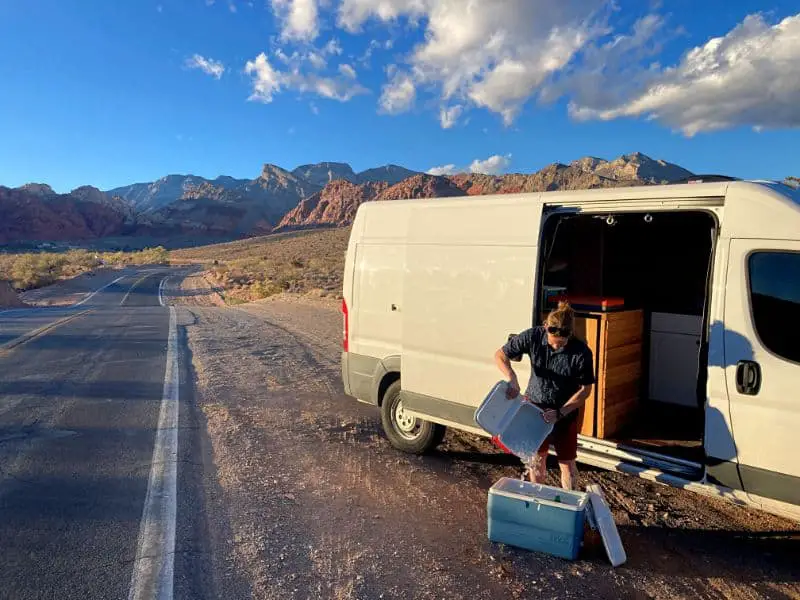
VAN LIFE WITH NO FRIDGE MEANS: BUYING FOOD WITH INTENTION
You know that saying about the bigger the space, the more things you’ll find to fill that space? Well, it rings true for those living on the road, too. Same goes for stocking your cooler. The fact of the matter is, that unless you’re heading off-the-grid into super remote areas for long periods of time, you can make do without a refrigerator at all by simply buying with intention. Toss a cooler and some ice in the mix, and there’s really not much you have to sacrifice. There’s just more you have to think about.
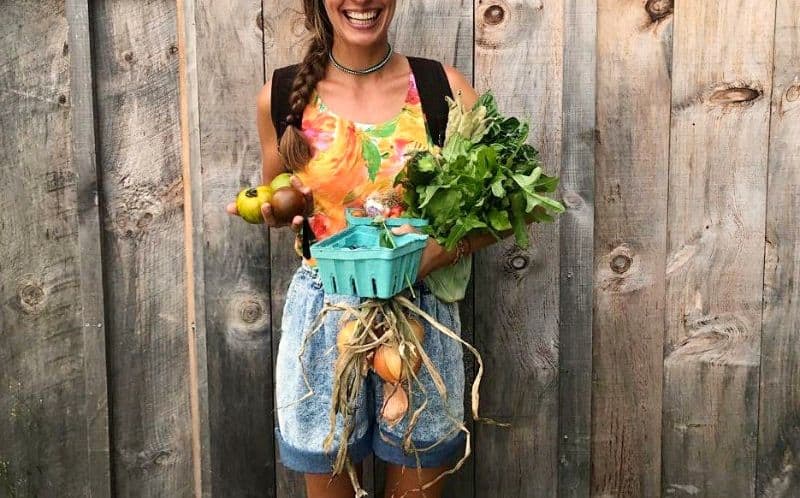
STORING & STOCKING FOOD IN YOUR VAN
Living in a van requires forethought, and food is no different. You’ll want to plan ahead -at least a little- and be conscious of your buying and eating choices. As a general rule of thumb, it’s far better to buy less but buy more frequently, than to stock up for two weeks and risk having some of your food go bad. Here’s some more advice on food stocking with intention:
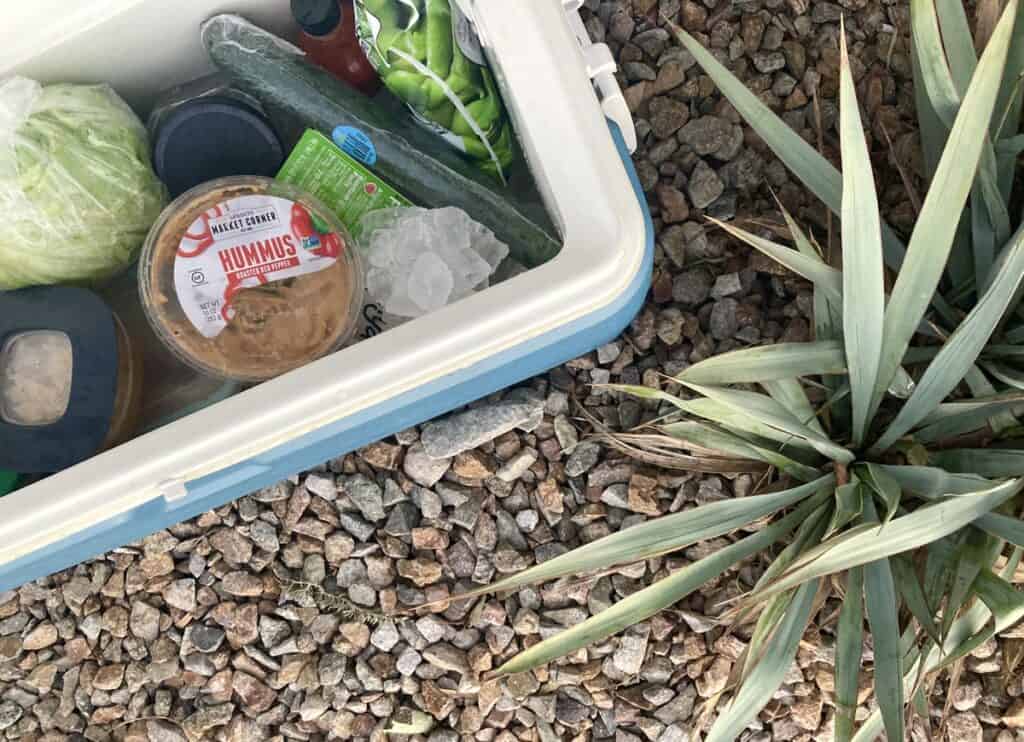
- Buy fresh as often as you can, and always cook perishables first. Especially meat.
- Buy smaller containers of things that need to stay cool, like yogurts. Even though larger containers are often cheaper, unless you eat a lot of a product fairly quickly, it’ll just take up space. And you risk it going bad if you forget about it.
- For cheese: focus on hard cheese blocks, they last longer.
- For vegetables: root veggies last longest unrefrigerated, like potatoes, carrots, beets and onions, but cabbage, avocados and most hard squashes last long too, just keep them in a cool spot and eat within a few days. Tomatoes, cucumbers, celery, sprouts, broccoli should be eaten within a couple of days, ideally.
- For fruits: try to eat them quickly, especially in warmer climates. Oranges, apples, kiwi, and mango usually last a few days without refrigeration. Keep fruit like strawberries, blueberries, melon, and grapes in airtight containers in your cooler.
- Salads are best kept cold, but keep them away from direct ice. Stocking them in a basket that hangs over ice works super well! Or better yet, in mason jars.
- Vacuum sealed foods are a great option if you’ll be off-grid for a few days (deli meats and cheeses, tofu packages, frozen fish and meats, etc); sometimes grocery stores will vacuum seal for you, so be sure to ask!
- Unless you need them in your life and need them often, don’t stock up on big mayos, ketchups, soy sauces, etc. Instead, grab those small to-go packets from rest stops or fast-food joints and start a lil’ collection.
- Bread is awesome, but the good stuff (the kind without loads of preservatives) goes stale or can get moldy quick. Tortillas last way longer.
NON-PERISHABLES ARE YOUR FRIEND
Hopefully canned soup and backpacking meals aren’t the first things that come to mind when I say non-perishables, but if they are, no judgment here; canned soups are awesome, backpacking meals are super convenient, and both can be lifelines when you have limited options in terms of food. So by all means, stock up on a few ready-made meals! But please do realize that there’s a whole world of whole food non-perishables that exists outside of those super-processed food-things, and your body will eventually thank you for choosing the healthier route, especially if you’ll be living on the road for a longer period. Plus, many non-perishables can often be purchased in the bulk sections of grocery stores, which means you can buy smaller quantities (in less packaging!) but more variety.
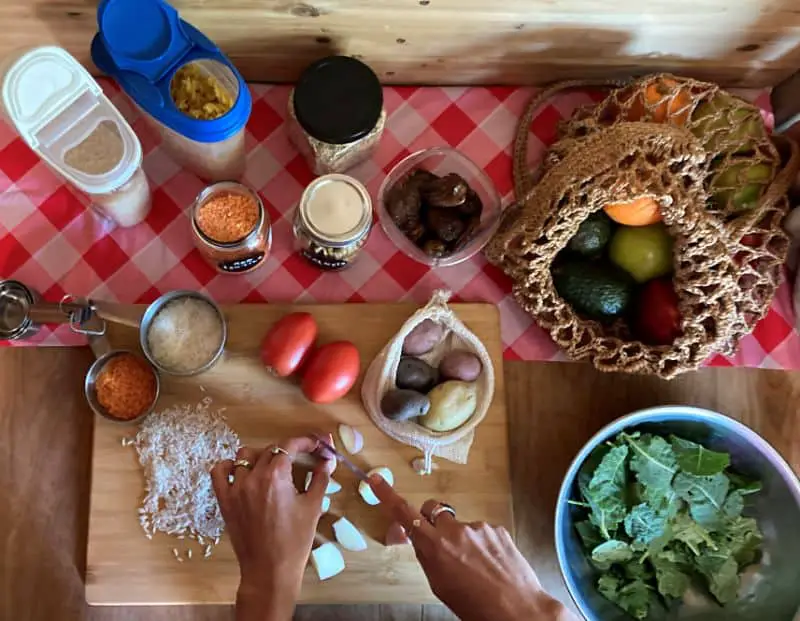
BEST NON-PERISHABLES FOR VAN LIFE
Where to start? Here are some of the top non-perishables to stock in your van, all of which can easily be stored for months (or heck, even years!) and be combined for simple, hearty, and super tasty meals.
- Whole grains, like rice, quinoa, barley, and oats (quick-oats are especially awesome!)
- Pasta. Be it regular egg noodles, bean-based elbow pasta or soba noodles.
- Canned beans, dried beans, and dried lentils
- Dried or freeze fried fruits and veggies, ideally ones that aren’t loaded with too much sugar or salt. Raisins, dried whole mango, freeze dried bananas, and dried mushrooms are some favorites.
- Canned fish (or fish in foil pouches). Vegan alternatives are out there, too!
- Protein powders and green juice powders for a quick dose of extra nutrients.
- Meat jerky, mushroom jerky, or vegan jerky.
- TVP, or texturized vegetable protein. Packed with non-meat protein and super easy to toss in a soup or pasta, but has a super long shelf life.
- Bouillon cubes (beef, chicken, vegetable, mushroom, you name it!) for easy soup creations.
- Tomato paste and curry paste. You can make your own sauces so easily, and it doesn’t take up much space.
- Seeds. For breakfasts, for dinners, for salads, for snacking, for everything! Chia seeds, pumpkin seeds, sunflower seeds, and hemp seeds are great for adding extra protein, too.
- All hail nuts and nut butters! Like seeds, they’re just as great in salads, on curries, for dipping apples in, and for quick-prep peanut sauces.
- Canned vegetables. Although no substitute for the real deal, they can help create an awesome meal in no time! Favorites include: butternut squash puree, whole beets, sweet corn, and artichoke hearts.
- Shelf-stable non-dairy milk, in smaller boxes, or cans of coconut milk. Condiments like tahini or mustard, which don’t need to be refrigerated as long as they’re stored in a cool place, and they make awesome sauces and dressings!
- Honey! Elevates oatmeal, can make a plain slice of bread a dessert, jazzes up tea, makes a great base for dressing. It can basically do no wrong, and it lasts, like, forever.
- Granola, and granola bars.
- Chocolate. Dark chocolate in particular. Store it in a cool space, but even if it melts a little, it’ll still firm up with the right temperature and be good to go.
BUT REALLY: IS LIVING IN A VAN WITH NO FRIDGE DOABLE LONG-TERM?
Hopefully by now you’re super stoked on hitting the road with no electric fridge and realize just how many possibilities exist by making do with the things you already have at your disposable (i.e., most likely a food cabinet, most likely a cooler, most likely ice.) The truth is, living in a van- or an RV, or in a car with a pop-up tent, whatever– is a learning process, and there’s no ideal way for it to be done. What works for me, essentially, may not work for you. It’s very possible you’re reading about ice and coolers and non-perishables and cooking and thinking: not today, and not ever, satan! To each their own! With a little intention, though, a little creativity, and a little extra thought, believe me when I say that you can still eat like royalty, and eat healthily, while living in your van without a refrigerator. And heck yes you can make it last for the long-term! But like with most things, you have to want it to.
TOP FIVE TAKEAWAYS FOR FRIDGE-LESS VAN LIFE
Living in a van without a traditional refrigerator doesn’t have to be difficult, or inconvenient, or impractical! Just roll with the process, enjoy the ride. Learn what works for you, and what doesn’t. Every experience can be catered to a specific person, including living in a van with no refrigerator!
- Where you put your cooler and how you handle your cooler matters more than your brand of cooler.
- Don’t put that which doesn’t need to be constantly cool…in your cooler. This can mean fresh avocados, or mustard, or eggs, or beverage cans. Optimize your space.
- Plan ahead. Having an idea of what you might cook in the coming few days will ensure you don’t over-buy, and hence, over-stuff your cooler and storage cabinets.
- Try to avoid overly processed read-made foods, and learn to enjoy cooking with shelf-stable whole foods (beans, grains, etc.). At least a little.
- Stay stocked up on water. You’ll need it to cook a lot of your non-perishables, in addition to regular drinking, washing, bathing, etc., so keep a healthy supply of the stuff on hand!
-
Sylvia Karczhttps://changingears.com/author/sylvia-karcz/
-
Sylvia Karczhttps://changingears.com/author/sylvia-karcz/







